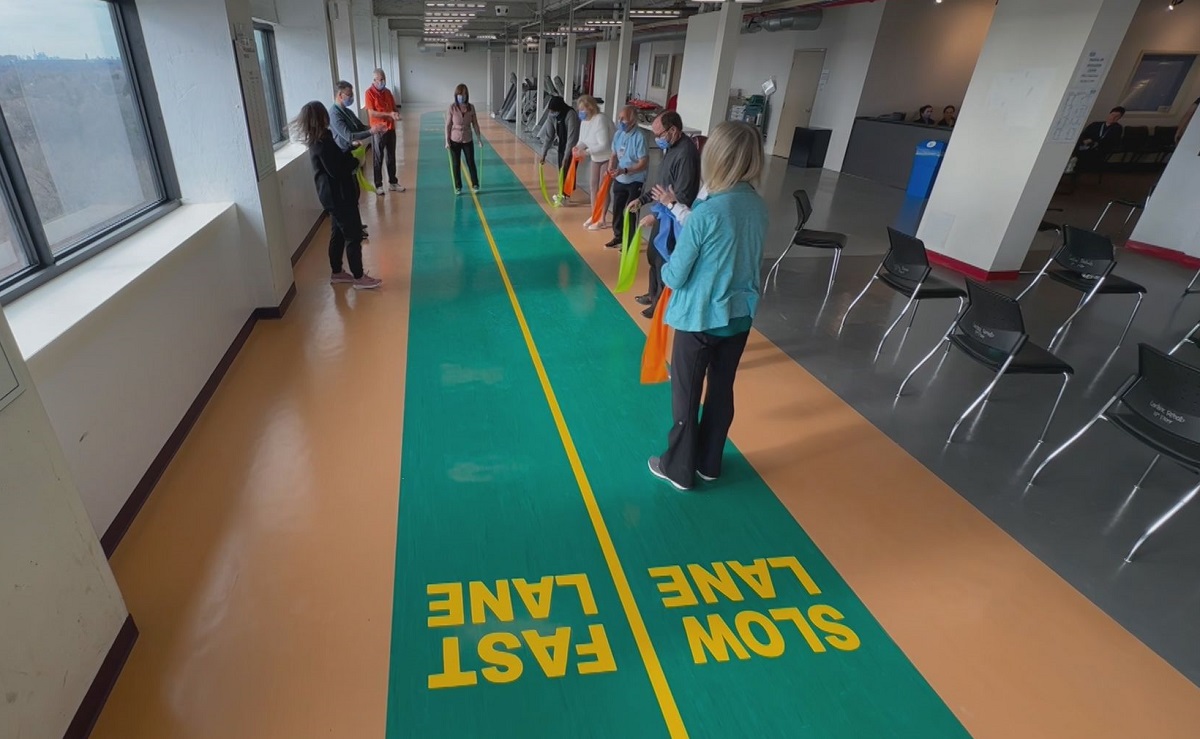Local News
Centenary Hospital’s cardiac rehab program in Scarborough seeing health care savings

As staff at Scarborough Health Network mark Heart Health Month, medical professionals at Centenary Hospital say their regional cardiac rehabilitation centre is seeing an exponential return when it comes to preventing hospitalizations and the associated financial costs.
The Leader Spirit recently toured the facility near the top of the hospital. The space, complete with stunning views of Scarborough, a lengthy walking track, gym equipment and an educational centre, primarily serves residents from Scarborough and Durham region residents.
Dr. Joe Ricci, the centre’s medical director, said a more recent study raised a notable statistic when it came to spending.
“It costs us about $880 per patient for six months, 24 visits — there are no medical expenses (to the patient), there’s no overhead billing — and for that each [participating patient] in turn costs the health-care system $5,600 less,” he said, noting that is a down-stream savings for hospital operating budgets.
“It’s a real and genuine improvement in the health of our population.”
Ricci said the centre started in the late 1980s after residents forced to drive to downtown Toronto for treatment petitioned for additional services in the east end.
“We can be more successful, we can get really good care to more people, and by doing it closer to home I think we make it both more accessible and better,” he said.
“We had 187 patients who had a heart attack participated in the first cardiovascular rotation program … now we have 4,000 patients a year.”
The unit offers exercise lessons, resistance training and educational seminars. To accommodate busy schedules, staff offer virtual sessions to help make it easier for residents.
Megan Hurley is one of the exercise therapists who work in the centre. She said the guiding philosophy for staff is simple: Make people feel comfortable and make sure they don’t compare themselves to others.
“People are also worried sometimes … they have some limitations, some joint pain, things like that. They’re worried they won’t be able to participate, but coming and speaking with us we’re really able to help them,” Hurley said.
“Moving more throughout the day, small steps, are really, really important and then the exercise will get there, but starting with moving more is one of the best things you can do.”
She also had this advice for activity goals.
“We are recommending that everyone sort of strives to get in those the current exercise guidelines, which is 150 to 300 minutes of cardiovascular-based exercise per week. That includes activities that will increase the heart rate for a sustained period, so walking, cycling, swimming.”
In the nearly 40 years Ricci has worked in cardiology, he reflected on the advances made in medicine and various other interventions that have cut mortality rates.
“The risk of dying after a heart attack one generation ago was in the range of 10 to 20 per cent, but now a person presenting to hospital with a heart attack has an average risk of dying of probably less than four per cent,” Ricci said.
He said going forward, there needs to be continued awareness of, and investment in, prevention initiatives.
“Once you know your risk and you start effective therapy, you reduce your future risk,” Ricci said.
“Cardiovascular disease is no longer the number one cause of death in Ontario.”
Click here to learn more about Centenary Hospital’s regional cardiac rehabilitation centre.












